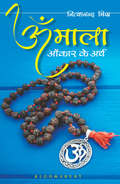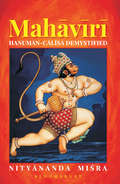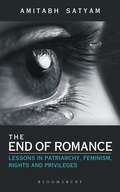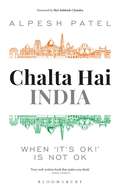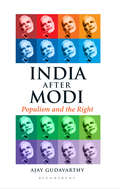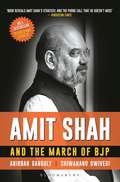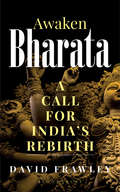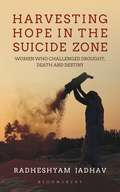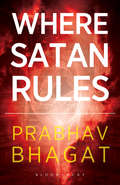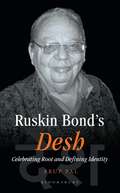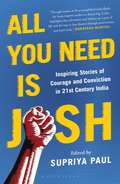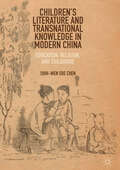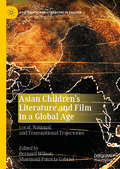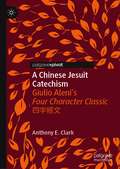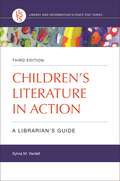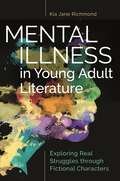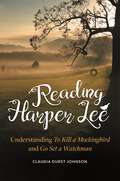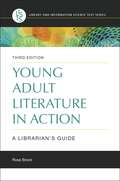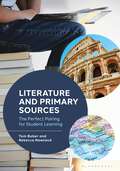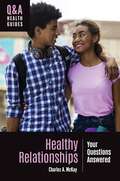- Table View
- List View
Om Mala: Omkar Ke Arth
by Nityanand MisraThe OM Mala is a book (and a mala or a rosary) about just one word-OM. OM is one of the shortest Sanskrit words, and yet is perhaps the most powerful one, besides being a globally recognized mystic mantra.The OM Mala gives 84 names of OM from Sanskrit texts and explains their meanings in 109 sections or beads: 108 chanting beads and one 'sumeru' bead. Each bead offers the meaning(s), explanation, traditions, etymology, and quotations for one or more names of OM. The book covers rare names of OM like 'shrutipada' and 'rasa' as well as common names like 'om', 'udgitha', and 'pranava'. Popular meanings (like Brahma-Vishnu-Shiva) and rare meanings (like inhalation, holding the breath, and exhalation) are included.The book contains teachings and narratives related to OM from Veda-s, Upanishad-s, Smriti-s, Purana-s, Ramayana, Mahabharata, Gita, Yoga, Tantra, Vaishnavism, Shaivism, and Shaktism. Pearls on OM from poems, plays, and works on music and Ayurveda are presented. The use of OM in Yogic breathing and meditation is explained and the explanations/relevance of OM in Jainism, Buddhism, and Sikhism is briefly touched upon. The OM Mala is a mini-encyclopaedia on OM and associated concepts in Indian religions and culture.
Mahaviri: Hanuman Chalisa Demystified
by Nityanand MisraThe Hanuman Chalisa authored by Goswami Tulsidas is one of the most popular Hindu devotional hymns. The 'Mahaviri' Hindi commentary (1984) by Swami Rambhadracharya has been acclaimed as the best treatise on the Hanuman Chalisa. This book presents an annotated and expanded English translation of the 'Mahaviri' commentary by Nityanand Misra.Each of the 43 verses of the 'Hanuman Chalisa' is explained in three stages. The first phase being a word-for-word translation to help the reader understand the literal meaning of each word in a verse. The second is a simple English translation of each verse. This third and final phase is an informed commentary on the true meaning of the verse, explaining the deep essence of the text with citations from authoritative Hindu scriptures (the Vedas, Upanishads, Puranas, Ramayana, Mahabharata, Gita, etc.) and other works of Goswami Tulsidas. All such citations are also translated into English.Following the commentary, Misra also provides five useful appendices for advanced readers. These include more than 120 endnotes (annotations), a detailed note on the prosody and rhythm of all the verses for chanters, the musical notation of the traditional melody of the Hanuman Chalisa for devotional singers and instrumentalists, and two alphabetical indexes for all words and verses used in the hymn.The book is a must-have for reciters and singers of the Hanuman Chalisa who want to understand the deep essence of Tulsidas's timeless hymn to Hanuman. It targets laypersons as well as scholarly readers. The design of the book, including font sizes and line spacing, is suitable for the elderly as well. The book has reached thousands of readers across the globe and has been praised as “the most comprehensive guide to the Hanuman Chalisa available in English”. It has been loved by readers for not only its scholarship and research, but also for its beautiful production, aesthetic typeface, attractive layout, and excellent footnotes and appendices.
The End of Romance: Lessons in Patriarchy, Feminism, Rights and Privileges
by Amitabh SatyamTwo genders made by nature coexisted comfortably forever, till about a few hundred years ago when men and women started identifying themselves differently. These identities started hardening over time and today they appear to be a different species in many situations… Sometimes laugh-out-loud, at times, deeply poignant, and at other times, provoking and questioning, The End of Romance is a fantastic, one-of-its-kind take on patriarchy and feminism, rights and privileges, abuse and consent, and cultures and laws related to men-women conflicts.Peppered with anecdotes, real-life incidents and everyday stories, the book discusses the natural, cultural and religious influences on the man-woman relationship and how this has evolved over time. The author asks questions few would ever utter: Is our society increasingly becoming anti-men? If so, will this lead to any good? Are gender dynamics always tilted only to benefit one gender? Can we ever achieve equality? These are debated with an analysis of the privileges of women and the abuse of men, a discussion on the prevailing myths, followed by recommendations on how the relationship can be brought back to equal. Unabashed, hilarious, and at times caustic, The End of Romance signals what most of us miss: Oppressive societies do not survive, whoever it may benefit at the moment.
Chalta Hai India: When ‘It’s Ok!’ is Not Ok
by Alpesh PatelIndia once commanded a massive 30 per cent share of the global GDP and led the world in most fields, but today the country sadly is a developing nation. People often attribute India's sluggish progress to the malaise called the Chalta Hai ('It's okay', 'Let it be') attitude, but not everyone agrees with that presupposition. Debates on the subject are often inconclusive and discomfiting questions remain unanswered. Are we really a Chalta Hai nation? Is Chalta Hai ingrained in our DNA or is it just a bad habit which can be easily exterminated? Will this attitude stop India from becoming a global power?Alpesh Patel delves into this quirky Indian approach and answers these questions by examining the country's pace of progress in fields such as education, infrastructure, films and sports since Independence. The book revisits our cultural, ideological and political history over three millennia to trace the roots of the Chalta Hai attitude of Indians. Interesting facts and unsettling inferences force the reader to introspect and awaken him to the need for an urgent action. Finally, the book charts out methods and suggestions on how to get rid of the Chalta Hai attitude and take India closer to the dream of becoming a developed nation.
India After Modi: Populism And The Right
by Ajay GudavarthyHave you realized that the divide between 'Us' and 'Them' has grown steadily in Indian politics? Do you sometimes wonder whether it will be repaired at all in the near future? Do you ever pause to reflect why emotions spill on the streets and why democratic institutions in India have become dysfunctional? Have you thought about why we get hurt easily and how this gets reflected in everyday politics?India after Modi attempts to address these questions through an analysis of events like Award Wapsi, demonetization, the crisis in JNU and higher education, and electoral outcomes, including in the states of Bihar, Delhi and Uttar Pradesh. Through this collection of essays, Ajay Gudavarthy focuses exclusively on Indian democracy after Narendra Modi took over as the prime minister in 2014. He looks at the politics that India has been witnessing since then and addresses emerging issues in Indian democracy, including that of women's participation, new urban spaces, and the role of youth.
Amit Shah and the March of BJP
by Anirban Ganguly Shiwanand DwivediThe story of Amit Shah's political life, struggles, rise and triumph is little known. For a leader who is often referred to as the Chanakya of Indian politics, who has dominated India's fast-paced and complex political stage since 2014, has altered its electoral map by leading the Bharatiya Janata Party (BJP) to successive historic victories post the May 2014 general elections, there is very little that is recorded or narrated. So, it's no surprise that the curiosity he evokes is ever on the rise.Most of what is written about Amit Shah is based on conjectures, hearsay, assumptions and biases. The real Amit Shah-the once booth-worker and now national president of the largest political party in the world, the master strategist who has pushed the BJP to an organisational pinnacle and yet talks of scaling peaks, a man who is unhesitant in his stand on nationalism and on anything which concerns India's national interest-has remained in the shadows, self-effaced, away from the limelight. The story of how he expanded the BJP into a pan-India party and the convergence of organisational science and ideology that has made the BJP a unique and formidable political entity is a story that needs to be told. The book narrates the personal and political journey of Amit Shah, captures the ideological world that shaped him and gives an account of the party that he is leading and shaping today. It is for the first time that his story is being told-an authentic, no-holds-barred portrayal of one of the most influential leaders of our times. To the political worker, the observer and to anyone even remotely interested in Indian politics, irrespective of their profession or political leaning, especially since the unfolding of Indian politics in the summer of 2014, this is a captivating exploration of the political life and journey of one of its central characters.
Awaken Bharata: A Call for India’s Rebirth
by David FrawleyToday there is a new battle going on over the 'idea of India', with some groups questioning if there ever was any real nation called 'India' prior to the British rule. Challenging this notion are those who claim that India has a profound national and cultural heritage since ancient times and was one of the main centres of civilization in the world, with its own characteristic ideals and practices born of dharma and yoga. The Constitution speaks of India that is Bharata, proclaiming this ancient name for the country. If we look at India as Bharata, the idea of the country and its unique identity and history become clear. Awaken Bharata is a plea for that eternal India to awaken and reclaim its esteemed place as the guru of nations, expressing once more its vast civilizational ethos. The book encourages a new vision of the country, linking its magnificent past with a more brilliant future. It emphasizes the role of a new 'intellectual kshatriya'-intellectual warriors of dharma-to challenge the inimical forces seeking to deny or displace India's great civilization.
Harvesting Hope in the Suicide Zone: Women Who Challenged Drought, Death and Destiny
by Radheshyam JadhavAs the flames danced all around her small hut, Vidya More had to make a hard choice. She could follow her husband into the fire along with her children. Or she could save herself and her little children from a terrible death. Acclaimed journalist Radheshyam Jadhav brings to readers true inspiring stories of women farmers and farm widows, like Vidya and many more, from the 'farmer suicide zone' of Maharashtra. These women have battled the tremendous odds-of poverty, misogyny and inequity-stacked against them to herald a silent revolution to overcome agrarian crisis. These feisty women wake up every morning and battle for survival. Suicide, unlike their husbands, is a luxury they can't afford. Extensively researched along with personal interviews, the book captures the women's stories and constructive struggle and how they discovered in themselves endless reserves of strength. While the men are driven to despair and death by debts, the women have fought their battles and found answers to the crisis. These simple, and often uneducated, women have developed their own methodology and science to manage and tackle drought and are experimenting with every possible option to give themselves and their families a life of dignity. They have taken up tough challenges and are sowing determination and hard work to achieve their dreams. The book captures their belief that dreams often come true. And hope is what keeps life going.
Where Satan Rules
by Prabhav BhagatBefore my time too, there have been cases of a ghost writing a journal to tell the truth about his life ...Mike Carterson is hounded by death. When the Japanese bomb Pearl Harbour, his parents are killed-along with thousands of other Americans. Mike and his friend Alex Gutherburg land up in an orphanage, from which they run away to try to cross the mighty Pacific in a small boat.When death looms again, they are saved by the SS Atlantic of the US Navy. Their fun life on board, however, is suddenly interrupted when their ship is given a strange assignment: to investigate the mysterious disappearances in the Bermuda Triangle.Mike and Alex are tormented by strange premonitions of the doom that awaits them in the Bermuda Triangle but the captain of the ship pays no heed to their warnings. And as the SS Atlantic enters the 'Devil's Triangle', they begin to encounter forces never imagined which spell doom not only for them but for all of humanity ... What are the chilling secrets that the Bermuda Triangle hides? Will Mike and Alex survive in the realm where Satan rules?
Ruskin Bond's Desh: Celebrating Root and Defining Identity
by Arup PalThis book explores the dilemma of Bond's 'two selves' and his existential search for an identity. This exploration, analysed across six chapters, is informed by a variety of postcolonial, historical, informational and critical texts on Bond and Anglo-Indians. Arup Pal focuses on four key literary works of Bond-The Room on the Roof, A Flight of Pigeons, Scenes from a Writer's Life and A Handful of Nuts-from the perspective of the author's developing sense of personal, national and cultural identity. He traces the journey that the author and his protagonists embark on in order to seek and ultimately define their sense of being.
All You Need is Josh: Inspiring Stories of Courage and Conviction in 21st Century India
by Supriya PaulIn a world filled with cynicism, few stand tall, carving their own path to success with courage, determination and grit. All You Need Is Josh brings to you stories of such unique individuals across India – of the aspiring astrophysicist who wanted to walk on the moon; the first person with a disability to top the civil services examinations; the domestic help who is now a published author; the army officer who amputated his own leg; the transgender woman who was expelled from her house; the Dalit child bride who now runs a business worth Rs1,000 crores, and many more.Filled with anecdotes and life-changing missives, these stories will remind you that it does not matter the circumstancesinto which one is born – what matters most is having the josh to overcome all odds and chase your dreams.
Ruskin Bond's Desh: Celebrating Root and Defining Identity
by Arup PalThis book explores the dilemma of Bond's 'two selves' and his existential search for an identity. This exploration, analysed across six chapters, is informed by a variety of postcolonial, historical, informational and critical texts on Bond and Anglo-Indians. Arup Pal focuses on four key literary works of Bond-The Room on the Roof, A Flight of Pigeons, Scenes from a Writer's Life and A Handful of Nuts-from the perspective of the author's developing sense of personal, national and cultural identity. He traces the journey that the author and his protagonists embark on in order to seek and ultimately define their sense of being.
Children’s Literature and Transnational Knowledge in Modern China: Education, Religion, and Childhood
by Shih-Wen Sue ChenThis book examines the development of Chinese children’s literature from the late Qing to early Republican era. It highlights the transnational flows of knowledge, texts, and cultures during a time when children’s literature in China and the West was developing rapidly. Drawing from a rich archive of periodicals, novels, tracts, primers, and textbooks, the author analyzes how Chinese children’s literature published by Protestant missionaries and Chinese educators in the late nineteenth and early twentieth centuries presented varying notions of childhood. In this period of dramatic transition from the dynastic Qing empire to the new Republican China, young readers were offered different models of childhood, some of which challenged dominant Confucian ideas of what it meant to be a child. This volume sheds new light on a little-explored aspect of Chinese literary history. Through its contributions to the fields of children’s literature, book history, missionary history, and translation studies, it enhances our understanding of the negotiations between Chinese and Western cultures that shaped the publication and reception of Chinese texts for children.
Asian Children’s Literature and Film in a Global Age: Local, National, and Transnational Trajectories (Asia-Pacific and Literature in English)
by Bernard Wilson Sharmani Patricia GabrielThis volume provides a key analysis of Asian children’s literature and film and creates a dialogue between East and West and between the cultures from which they emerge, within the complex symbiosis of their local, national and transnational frameworks. In terms of location and content the book embraces a broad scope, including contributions related to the Asian-American diaspora, China, India, Indonesia, Iran, Japan, Malaysia, the Philippines, South Korea, Sri Lanka, and Taiwan. Individually and collectively, these essays broach crucial questions: What elements of Asian literature and film make them distinctive, both within their own specific culture and within the broader Asian area? What aspects link them to these genres in other parts of the world? How have they represented and shaped the societies and cultures they inhabit? What moral codes do they address, underpin, or contest? The volume provides further voice to the increasingly diverse and fascinating output of the region and emphasises the importance of Asian art forms as depictions of specific cultures but also of their connection to broader themes in children’s texts, and scholarship within this field.
A Chinese Jesuit Catechism: Giulio Aleni’s Four Character Classic 四字經文 (Christianity in Modern China)
by Anthony E. ClarkThis book is the first scholarly study of the famous Jesuit Chinese children’s primer, the Four Character Classic, written by Giulio Aleni (1582–1649) while living in Fujian, China. This book also includes masterful translations of both Wang Yinglin’s (1551–1602) hallowed Confucian Three Character Classic and Aleni’s Chinese catechism that was published during the Qing (1644–1911). Clark’s careful reading of the Four Character Classic provides new insights into an area of the Jesuit mission in early modern China that has so far been given little attention, the education of children. This book underscores how Aleni’s published work functions as a good example of the Jesuit use of normative Chinese print culture to serve the catechetical exigencies of the Catholic mission in East Asia, particularly his meticulous imitation of Confucian children’s primers to promote decidedly Christian content.
Mauritius Mathematics Grade 7 (Part-II) - MIE
by Mauritius Institute of EducationThe Mathematics Grade 7 textbook by Mauritius Institute of Education.
Children's Literature in Action: A Librarian's Guide (Library and Information Science Text Series)
by Sylvia M. VardellThis practitioner-oriented introduction to literature for children ages 5–12 covers the latest trends, titles, and tools for choosing the best books and materials as well as for planning fun and effective programs and activities.The third edition of Children's Literature in Action provides an activity-oriented survey of children's literature for undergraduate and graduate students seeking licensure and degrees that will lead to careers working with children in schools and public libraries. Author Sylvia M. Vardell draws on her 30 years of university teaching and extensive familiarity with the major textbooks in the area of children's literature to deliver something different: a book that focuses specifically on the perspective and needs of the librarian, with emphasis on practical action and library applications. Its contents address seven major genres: picture books, traditional tales, poetry, contemporary realistic fiction, historical fiction, fantasy, and informational books. Each chapter includes practical applications for the educator who shares books with children and who develops literature-based instruction. Chapters are enriched by author comments, collaborative activities, featured books, special topics, and activities including selected awards and celebrations, historical connections, recommended resources, issues for discussion, and assignment suggestions. This new edition incorporates the 2018 AASL National School Library Standards.
Mental Illness in Young Adult Literature: Exploring Real Struggles through Fictional Characters
by Kia Jane RichmondThis book explores how mental illness is portrayed in 21st-century young adult fiction and how selected works can help teachers, librarians, and mental health professionals to more effectively address the needs of students combating mental illness.Mental Illness in Young Adult Literature: Exploring Real Struggles through Fictional Characters highlights American young adult literature published since the year 2000 that features characters grappling with mental illness. Chapters focus on mental disorders identified by the most recent Diagnostic and Statistical Manual of Mental Disorders (DSM-5), including anxiety, depression, bipolar disorder, schizophrenia, ADHD, and OCD. Each chapter begins with a description of a mental illness that includes its prevalence, demographic trends, symptoms, related disorders, and treatment options before examining a selection of young adult texts in depth. Analysis of the texts explores how a mental illness manifests for a particular character, how that character perceives him- or herself and is perceived by others, and what treatment or support he or she receives. The connections between mental illness and race, ethnicity, gender, sexuality, and identity are examined, and relevant research from education, psychology, and adolescent health is thoroughly integrated. Each chapter also provides a list of additional readings. An appendix offers strategies for integrating young adult literature into health curricula and other programs.
Reading Harper Lee: Understanding To Kill a Mockingbird and Go Set a Watchman
by Claudia Durst JohnsonThe first book-length study of Harper Lee's two novels, this is the ultimate reference for those interested in Harper Lee's writing, most notably as it considers race, class, and gender.To Kill a Mockingbird is timeless, continuing to be a favorite among both students and adults. One million copies are sold every year, and it remains one of the books most often taught in school. This companion guide helps students to better understand the complex themes of race, class, and gender that were first introduced in To Kill a Mockingbird and remain relevant in Go Set a Watchman, which both challenges and mirrors the topics discussed in Lee's first novel. A literary scholar and a friend of Harper Lee herself, author Claudia Durst Johnson brings a unique perspective to Lee's texts. The book provides a historical background of the Great Depression and the beginning of the Civil Rights Movement as well as an analysis of the widespread censorship of Lee's works. Chapters provide important context for topics such as racial issues, women's issues, and class divisions in the Deep South and serve as discussion points that give students a starting point for their research; similarly, teachers who struggle with how to introduce students to these challenging but timely topics will appreciate the wealth of knowledge this companion guide will deliver.
Young Adult Literature in Action: A Librarian's Guide (Library and Information Science Text Series)
by Rose BrockTaking a genre approach, this overview of young adult literature shows new librarians and library science students the criteria to use for selecting quality books, including recommended titles.This third edition of Young Adult Literature in Action draws on the success of the previous two editions authored by Rosemary Chance, updating and expanding on them to meet the needs of today's librarians and library science students. It includes a new focus on diverse books, LGBTQ+ selections, the role of book formats, and the relevance of librarians serving teen populations and is an ideal resource for teaching young adult literature courses.Organized by major genre divisions, this easy-to-use book includes new information on timely topics such as audio and e-books, accessible books, and graphic novels. Each chapter includes revised and updated information on collaborative activities, featured books, special topics and programs, selected awards and celebrations, historical connections, recommended resources, issues for discussion, author comments, and assignment suggestions. Further updates include citations of exemplary young adult books and award winners, references, websites, and a bibliography.
Literature and Primary Sources: The Perfect Pairing for Student Learning
by Tom Bober Rebecca NewlandEnrich student engagement and deepen learning with this guide to foolproof techniques and strategies to integrate primary sources and literature to benefit learners from kindergarten through high school.Readers of all ages experience literature in a different light when historical context is provided via primary sources. Literature, meanwhile, helps learners to uncover additional layers of meaning inherent in primary sources. Guided by best practices developed by the authors over years of working with both students and teachers, this book speaks to the countless opportunities for instructors to integrate related primary sources with the literature that students read in school classrooms-from historical fiction and poetry to graphic novels.
Healthy Relationships: Your Questions Answered (Q&A Health Guides)
by Charles A. McKayIntended for young readers interested in creating and maintaining physically and emotionally healthy relationships, this book answers common questions and offers practical guidance on navigating such everyday issues as conflict resolution and jealousy.Part of Bloomsbury's Q&A Health Guides series and authored by a clinical psychotherapist, this book equips readers with the knowledge and tools they need to pursue safe and meaningful romantic relationships. Although many teens and young adults are interested in dating, entering into the worldof romantic relationships can spark a number of difficult questions. This book's 46 questions address concerns related to attractiveness, readiness for a relationship, building connection and trust, conflict, sexual health, setting boundaries, and breakups:- How do you know when you're ready to date?- Is conflict normal, and how do you deal with it?- What are the warning signs that a relationship is toxic or abusive?- How do you handle a breakup and the sometimes messy aftermath?.The text strikes a balance between theory and practice, offering clear explanations of foundational concepts in psychology and interpersonal communication, as well as useful suggestions that readers can implement in their own lives.Augmenting the main text, a collection of 5 case studies illustrate key concepts and issues through relatable stories and insightful recommendations. The "Common Misconceptions" section dispels 5 long-standing myths about relationships, directing readers to additional information in the text. The glossary defines terms that may be unfamiliar to readers, while a directory of resources curates a list of the most useful relationship-related books, websites, and other materials. Finally, readers can turn to the "Guide to Health Literacy" section for skills and strategies for finding, evaluating, and using credible sources of health information both on and off the Internet.
